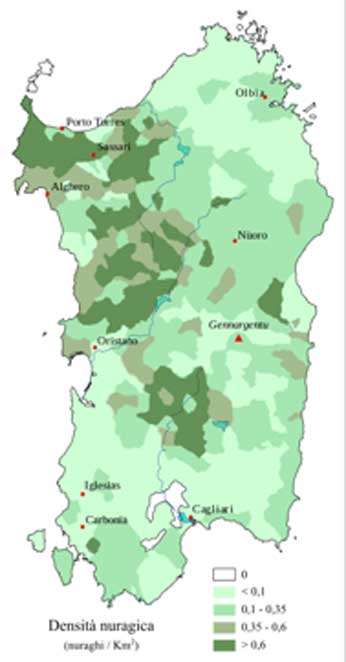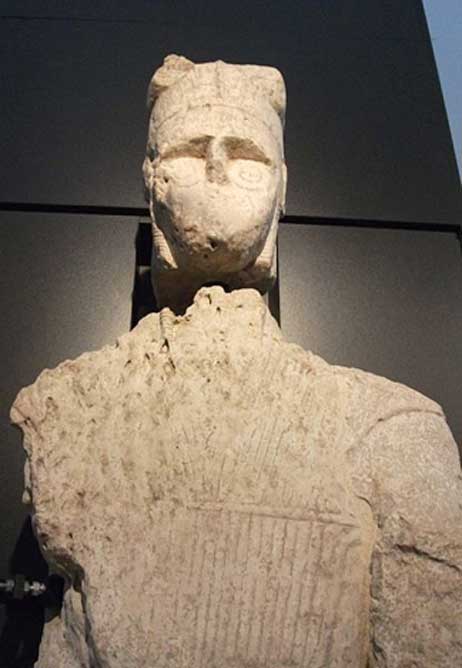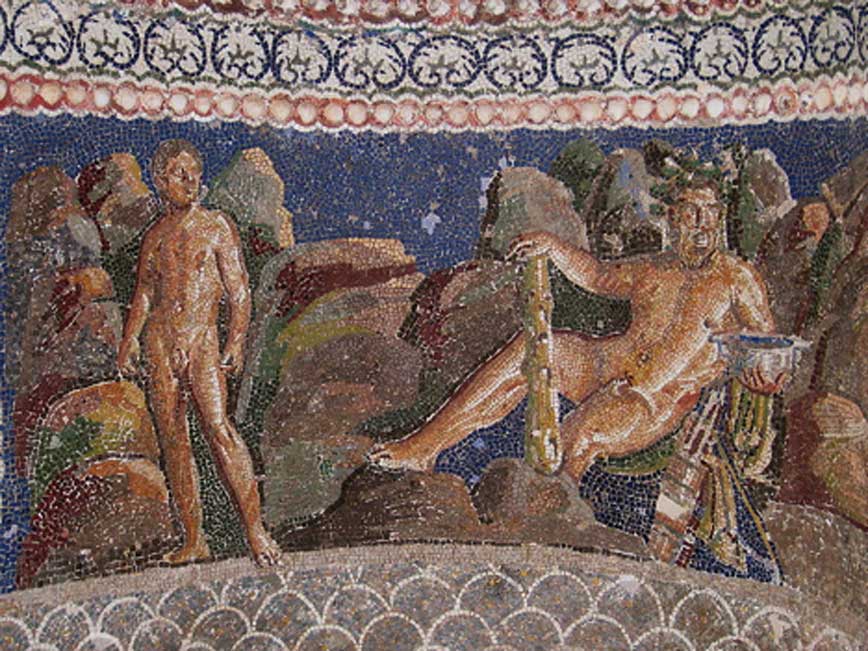
Were the Anunnaki the Architects of the Towers and Tombs of the Giants of Sardinia?
Sardinia is one of the most geologically ancient lands in Europe, inhabited during the Upper Paleolithic era, home to a Nuragic civilization that left nothing behind by way of writing. Folklore paint these people as seafarers, perhaps mercenaries - Srdn- was recorded in 16th century BC Egyptian texts — who may have originated from Asia-Minor.

Density map of nuraghes on Sardinia per square kilometer (Fulvio314/ CC BY-SA 3.0)
Then there is Sardinian language. Many words, dialects, names of mountains and rivers have no basis in Greek, Latin or Punic, nor Semitic or pre-Indo European. They do, however, show analogies with Basque and North Libyan languages and dialects along the Danube. Given that Sardinians’ physiognomy is also the most dolichocephalic, with a high incidence of long heads, and the DNA of its population from 10,000 BC surviving in the present population — a unique genetic heritage — suggests their language may be a remnant of a former, and now lost, civilization.

Sculpture, Giant of Monte Prama, warrior, Sardinia, Italy, Nuragic civilization, Bronze Age (DedaloNur / CC BY-SA 3.0)
Towers and Tombs of the Giants
Even more mysterious are the thousands of towers and tombs of the giants, the former named nuraghe, except no published source informs of how these unusual structures, many of which are based on megalithic stonework, came to be associated with tall people. As to their age, historians and archaeologists place them anywhere between 3500-1500 BC and yet no carbon dating has been performed to validate this range. Like nearby Malta, the sites have been arbitrarily allocated a period that best fits the academic consensus, one that relies on pottery shards or animal bones among the dirt inside these structures. Realistically, the people who built such impressive temples would also have kept them clean, free of debris, thus what archaeologists are dating is the period long after the sites fell out of use, a period of decline when they accumulated debris, and began to be used for purposes that may have differed from their original intent. By this logic, if the lowest habitation layer is dated to 3500 BC, the site itself may be decades or hundreds, even thousands of years older.
It seems that to solve the mystery of the places of the giants one must turn to etymology, local tradition, even archaeo-astronomy, the relationship between a temple and its mirrored stellar object in the sky.
- Gobekli Tepe Archaeoastronomy and the Second Hill of Osiris
- Ancient Sacred Sites Triangularly Aligned by the Footsteps of the Gods
- The Giants of Ancient Egypt: Part 1 - A Lost Legacy of the Pharaohs
The Origin of Nuraghe
On my recent journey to Sardinia I researched the origin of the word nuraghe. It is certainly alien to the country, appearing instead in the Maltese language, itself an amalgam of Arabic, Hebrew, near eastern and north African languages. Nur means ‘just or rightful people’; its origins lie in Armenian and Azerbaijani, adjoining nations in the south Caucasus region, where it also means ‘light or shining’; aghe, its root ag in particular, means ‘white’. Together one can extrapolate the meaning of nuraghe, tower of the giants, as ‘a place of assembly of the just or rightful, white, shining people’.





